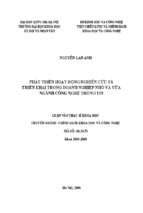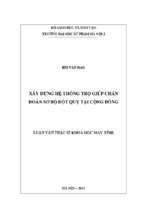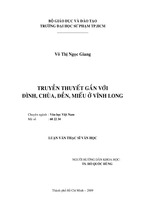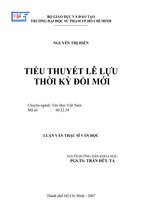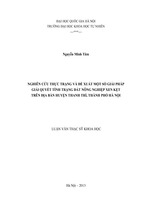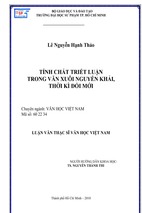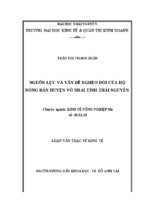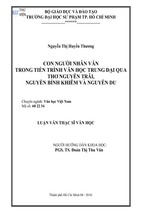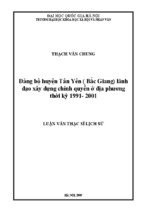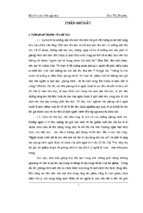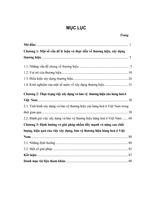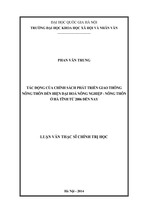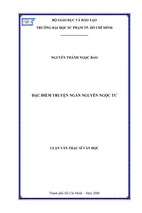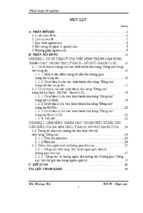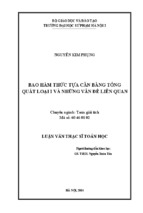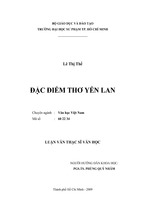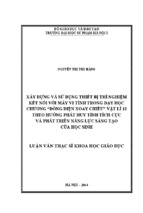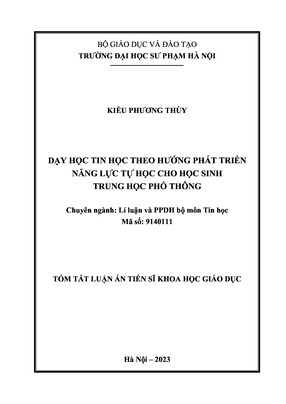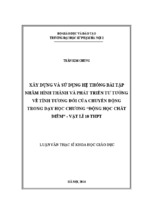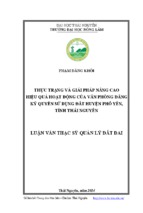The agreeableness of film in general and series film in particular in cultural perspective is the main inspiration of this research. This study is aimed at the realization of reflection of American cultural values in the series “Glee” and the implication of the usefulness of films in understanding Cross – Culture Communication To satisfy these research objectives, several instruments, are utilized effectively by the author. This study study employs qualitative method with the two main instruments. Film analysis and observation are likely to be recognized as the most notable instrument which assists the author to reach the majority of research objectives. It is revealed in the study that the series film “Glee” displays clearly nine American cultural values targeted in the literature review, namely, individual freedom, self – reliance, equality of opportunity, competition, material wealth, hard work, directness and openness, informality and practicality. Besides, the author expects to recommend the helpfulness of using movies in the study of Cross – Culture Communication.
VIETNAM NATIONAL UNIVERSITY, HANOI
UNIVERSITY OF LANGUAGE AND INTERNATIONAL STUDIES
FACULTY OF ENGLISH LANGUAGE TEACHER EDUCATION
GRADUATION PAPER
SINO-VIETNAMESE WORDS USED IN
TRANSLATING ENGLISH INTERNATIONAL
ECONOMICS TERMS
PRE AND POST 1992
Supervisor: Ngo Ha Thu, MCS.
Student: Hoang Thi Thu Hien
Year of enrolment: QH 2009
Ha Noi, May 2013
ĐẠI HỌC QUỐC GIA HÀ NỘI
TRƯỜNG ĐẠI HỌC NGOẠI NGỮ
KHOA SƯ PHẠM TIẾNG ANH
KHOÁ LUẬN TỐT NGHIỆP
NGHIÊN CỨU TỪ HÁN VIỆT ĐƯỢC SỬ DỤNG
TRONG DỊCH THUẬT CÁC THUẬT NGỮ
KINH TẾ QUỐC TẾ TIẾNG ANH TRƯỚC VÀ
SAU NĂM 1992
Giáo viên hướng dẫn: Th.S Ngô Hà Thu
Sinh viên: Hoàng Thị Thu Hiền
Khoá: QH 2009
HÀ NỘI – NĂM 2013
ACCEPTANCE
I hereby state that I: Hoang Thi Thu Hien, class 09E23, being a
candidate for the degree of Barchelor of Arts (TEFL) accept the
requirements of the College relating to the retention and use of
Bachelor’s Graduation Paper depsited in the library.
In terms of these conditions, I agree that the origin of my paper
deposited in the library should be accessible for the purposes of the
study and research, in accordance with the normal conditions
established by the librarian for the care, loan or reproduction of the
paper.
Hanoi, April 25th 2013
Hoàng Thị Thu Hiền
ACKNOWLEDGEMENT
On the completion of this thesis, I would like to express my deepest
gratitude to my supervisor, Ngo Ha Thu, MCS. for her critical comments, helpful
suggestions as well as her constant encouragement from the beginning stage of
working out the research proposal to the final stage of writing up the thesis.
Without her valuable guidance, this thesis would be far from completed.
I also acknowledge my indebtedness to Dr. Khu Tuyet Mai and other
lectures of University of Economics and Business, VNU, who gave me their
practical guidance, assisted me with data collection and shared with me their long
and varied experience.
I take this opportunity to extent my special thank to all lectures of Faculty
of English Language and Teacher Education at University of Languages and
International Studies, for their useful lectures during my B.A course.
Finally, I would also like to thank to my family and my classmates for their
great support and encouragement in the accomplishment of my thesis.
i
ABSTRACT
This study reflects the reality of taking advantage of the Sino-Vietnamese
vocabulary in translation of English international economics terms pre and post
1992. In addition, the study is conducted to identify the changes in the types and
trends of Sino-Vietnamese words used to translate those terms pre and post 1992
in the link with the 1992 Constitution. To achieve these aims, the methods applied
to collect data are sampling, data collection instrument and data analysis.
Overall, the usage of Sino-Vietnamese vocabulary in translation of English
international economics documents under the influence of the 1992 Constitution
has not been paid proper attention by translators in general, and by students in
particular. Therefore, the paper concentrates on indicating the changing
classification and usage tendencies around the milestone of 1992 so as to help
translators and students have the wider overview on Vietnamese Chinese-derived
words in English international economics terms translation. However, limitations
are unavoidable which hopefully would shed light on the further study.
ii
TABLE OF CONTENT
Page
ACKNOWLEDGEMENT
i
ABSTRACT
ii
LIST OF FIGURE
v
LIST OF TABLES
vi
LIST OF BREVIATION
vii
LIST OF APPENDIX
viii
CHAPTER 1: INTRODUCTION
1.1 Rationale
1
1.2. Aims of the study and research questions
1.2.1. Aims
3
1.2.2. Research questions
4
1.3. Scope
4
1.4. Significance of the research
5
1.5. Organization of the research
6
CHAPTER 2: LITERATURE REVIEW
2.1. Review of Translation
7
2.2. Review of international economics terminology
9
2.2.1. Terminology
9
2.2.2. International economics
10
2.2.3. International economics terms
12
2.3. Review of Sino-Vietnamese words
14
2.3.1. Definition
14
2.3.2. Characteristics
15
iii
2.3.3. Classification
18
2.4. Review of the year 1992 in Vietnam
20
CHAPTER 3: RESEARCH METHODOLOGY
3.1. Sampling
22
3.2. Data collection instrument
22
3.3. Data analysis
23
CHAPTER 4: FINDINGS AND DISCUSSION
4.1. Research question 1: What types of Sino-Vietnamese words
24
are used to translate English international economics terms pre
and post 1992?
4.1.1. Time-based
24
4.1.2. Form-based
26
4.2. Research question 2: What are the trends of using Sino-
30
Vietnamese words to translate English international economics
terms pre and post 1992?
CHAPTER 5: CONCLUSION AND RECOMMENDATIONS
5.1. Major findings of the research
38
5.2. Limitation of the study
39
5.3. Contribution of the study
39
5.4. Suggestions for further studies
39
Reference
40
Appendix 1
43
Appendix 2
46
iv
LIST OF FIGURES
Figure
1
Page
The proportion of time-based types of Sino-
26
Vietnamese words used for translating English
international economics terms.
2
The proportion of form-based types of Sino-
28
Vietnamese words used for translating English
international economics terms pre 1992.
3
The proportion of form-based types of SinoVietnamese words used for translating English
international economics terms post 1992.
v
29
LIST OF TABLES
Tables
Page
1
Form-based classification of Sino-Vietnamese words
19
2
Common international economics terms translated
31
by different Sino-Vietnamese words pre and post
1992.
3
The trend of using Sino-Vietnamese words in
translating English international economics terms
vi
34
LIST OF ABBREVIATIONS
ASEAN
Association of Southeast Asian Nations
EU
European Union
FELTE
Faculty of English Language and Teacher Education
IMF
International Monetary Fund
ULIS
University of Languages and International Studies
UN
The United Nations
VNU
Vietnam National University
WB
World Bank
vii
LIST OF APPENDICES
Appendix
1
Page
English international economics terms translated
43
by Sino-Vietnamese words pre 1992
2
English international economics terms translated
by Sino-Vietnamese words post 1992
viii
46
CHAPTER 1: INTRODUCTION
This chapter gives the general introduction about rationale, aims of the study
and research questions, scope and significance of the study.
1.1. Rationale
In the context of globalization and integration since the last few decades,
communication and cooperation have become inevitable to any country. Friendly
relationships of countries all over the world are greatly promoted thanks to
document exchange. Therefore, it cannot be denied that translation plays an
enormous role in enhancing friendship of countries worldwide.
Especially, in global settings, trade exchange among different countries has
increased dramatically and national barriers seem to be faded out. These favorable
conditions enable international economics to strongly develop (Stiglitz and
Charlton, 2012). That is a reason for a large number of international economics
documents such as economic contracts, researches on economic issues, books
about economics, etc to be translated.
That situation can be seen obviously in many countries included Vietnam.
After persistent and resilient wars to achieve freedom and independence for the
whole nation, Vietnam carried out an economic reform policy known as “doimoi”
in the year of 1986 together with the enacting of 1992 Constitution of the Socialist
Republic of Vietnam. 1992 Constitution of the Socialist Republic of Vietnam is
the modified version of 1980 Constitution, which was initiated by Vietnam
National Assembly in the sixth Congress of the Communist Party of Vietnam. The
modified constitution aims to meet requirements of some new missions, new tasks
in the new historical period (Constitution of the Socialist Republic of Vietnam,
1992). Therefore, it mentions some new areas in the economy including new
1
regulations for international economics in relationship with foreign countries. This
constitution marks an important watershed when Vietnam underwent a transition
from a centrally planned economy into a free market oriented one. According to
Mark Sidel (2009) in The Constitution of Vietnam: A Contextual Analysis., it is
also a landmark for a variety of considerable changes in economic sectors,
operation and organization of the economy. Vietnam has lifted many restrictions
in trade relations with other countries, which has created certain advantages for the
country to widen its international business.
The year 1992 with many urgent and important reform policies has set
foundation for development of Vietnamese economy in general and its
international economics in particular (Justino, 2008). For the first time in 1992,
Vietnam gained trade balance of import-export. Those significant changes
attracted a great amount of investment from foreign investors. Several
multinational corporations have been established, many agreements on export and
import have been signed. That movement has brought out the high demand for
international economics documents’ translation.
Especially, Vietnam-China border war in 1979 as a typical event has some
certain influences on relationship between these two countries (Freeman and
Thompson, 2011). Then, economic and diplomatic exchanges and transactions
between these two countries were restricted. Thus, the trend that Sino-Vietnamese
words were used rather commonly in Vietnamese society may turn its direction.
Besides, arrival of the President of the United States, Bill Clinton and his
declaration of normalizing Vietnam- America relationship in 1995 opened a new
page for relation of Vietnam and the United States in various areas such as
diplomacy, culture, education, especially economics. Those remarkable events are
said to probably entail a big change in economic relations and in tendency of using
Sino-Vietnamese words and English words for translation.
2
In fact, it is necessary to understand profoundly relation between language and
socio-economy of Vietnam in 1992 so that language can be used suitably.
However, background knowledge of some translators about law and 1992
Constitution as an instance is not really adequate. The link between 1992
Constitution and international economics have not received the proper awareness
and attention while translation works even can affect other aspects such as cultural
and diplomatic exchange. Being a student learning International economics as
Double major and being interested in Sino-Vietnamese words, the writer is
inspired to do this research on “Sino-Vietnamese words used in translating English
international economics terms per and post 1992”.
Because of the reasons above, carrying out a study on “Sino-Vietnamese
words used in translating English international economics terms pre and post
1992” is highly essential.
1.2. Aims of the study and research questions
1.2.1. Aims
The research aims at studying and discovering the trends of using SinoVietnamese words for international economics terms translation before and after
the year 1992. Influences of 1992 Constitution of Socialist Republic of Vietnam
after “doimoi” on external economics translation will also be made clear. Thus, the
study aims at providing translators in general a wider and deeper understanding
about translating economics documents, especially translating methods applied in
those documents. Then, the study is also expected to help translators or any
people interested in translation enhance their responsibilities and abilities to
increase formality in translation and discover the link of translation with many
other areas such as economics and law. The study can help to contribute to
improve the translation of international economics in the modern social context
3
through studying the trends of using Sino-Vietnamese words in translating
international economics documents pre and post the year 1992. From these aims,
the thesis is supposed to introduce to ULIS’s students of translating and
interpreting major strategies for study and employability development and
solutions for Vietnamese translators to create more valuable translations
supporting education and international economics of the country.
1.2.2. Research questions
The aims of this research will be made clear with two research questions as
follows:
-
What types of Sino-Vietnamese words are used to translate English
international economics terms pre and post 1992?
-
What are the trends of using Sino-Vietnamese words to translate
international economics terms pre and post 1992?
1.3. Scope
The premise of this thesis is identifying types of Sino-Vietnamese words used
to translate international economics terms from English into Vietnamese.
Therefore, all of the international economics terms used in this study are English
terms which are selected from English books. The focus of this research is put on
international economics terms used in international economics books published
before and after the year 1992 so that a comprehensive view can be made. Main
books utilized in this study are French – English – Vietnamese Economics Terms
Dictionary (University of Planning, 1981), Oxford – Duden Pictorial English –
French - Vietnamese Dictionary (World Publisher, 1990) and International
economics Course Book (Khu & Vu, 2010). Those books are translated by
professional translators and are censored by famous publishers. Therefore, terms
which are applied in this thesis are of formal style and high reliability.
4
This study examines how professional translators apply Sino-Vietnamese
words in translating those terms; the link between the 1992 Constitution and SinoVietnamese words used to translate international economics terms translation, and
how translation of those economic terms before 1992 is different from those after
the year 1992. Each term has its own meaning and attaches to a specific context;
thus, methods used to translate the terms are expected to be diversified. It is also
expected that the data collection and data analysis will be able to answer research
questions above.
1.4. Significance of the research
In the setting of globalization, especially with Vietnam’s participation in
World Trade Organization in 2007, exchanges goods and services with
international markets have been going on more and more busily. The wide and
deep integration has put Vietnam under several influences by fluctuations and
changes of regional and global economies (Khu & Vu, 2010). This fact leads to a
high demand for and requirement of good translations for smooth transactions.
Effective translations not only pave way for global interaction with an excellent
opportunity to undergo socio-cultural exchange but also help to set basis for
further studies on language and economics. Obviously, international economics
terms should be paid much more attention than ever before. In order to have
effective translations, it is necessary to link economic conditions and language in
uses of Vietnam and those of other strategic partners, typically China and
America.
The thesis is expected to positively complement for studies on different areas
of translation. Then, the researcher hopes that background knowledge and
recommended methods presented in this thesis would be useful for translators of
international economics, especially inexperienced translators, in their work.
5
Moreover, it is anticipated that analysis and findings by this thesis will be
applicable and supportive to students and lecturers of economics major.
1.5. Organization of the research
The thesis consists of five chapters:
Chapter 1: Introduction. This part includes rationale, aims of the study,
research questions, scope of the research, and significance of the research and
organization of the research.
Chapter 2: Literature Review. This chapter gives an overview to theories
related to the topic of the study. Definition of key terms and presentation about
previous related studies are included in this chapter.
Chapter 3: Research Methodology. The chapter describes the materials and
equipment used in the research, depicts data collection process as well as explains
the measurements and calculations made upon the data.
Chapter 4: Findings and Discussion. Chapter 4 shows all results achieved
from data collection and analysis. The answer for three research questions will be
indicated in this chapter.
Chapter 5: Conclusions and recommendations. This chapter summarizes
main conclusions of the study and gives some suggestions for the following
research concentrating on this field of study.
CHAPTER 2: LITERATURE REVIEW
This chapter provides readers with an overview to theories related to the topic
of the study. Definition of key terms and presentation about previous related
studies are included in this chapter.
2.1. Review of Translation
6
Translation is revealed to be increasingly essential, especially in the
integration context. The fast development of communication has made translation
multidimensional and extensive. Translation is applied in various areas of life such
as education, diplomacy, culture. In order to understand more deeply about roles
of translation, key definitions of translation need to be absorbed. The concepts
concerning with translation have been developed until present to bring out a
satisfactory definition of translation.
Translation is the replacement of a representation of a text in one language by
as equivalent text in a second language. The aim is to as accurately as possible all
grammatical and lexical features of the “source language” original by finding
equivalents in the “target language”. At the same time all factual information
contained in the original text… must be retained in the translation (Hartman and
Stock, 1972).
Translation is the expression in another language (or target language) of what
has been expressed in another, source language, preserving semantic and stylistic
equivalences (Dubois, 1973).
Often, though not by any means always, it is rendering the meaning of a text
into another language in the same way that the author intended in the text
(Newmark, 1995).
Despite different ways of expressing, those famous theorists all have a thing in
common which is translation turns a text of source language into a correct and
understandable version of target language without losing the suggestion of the
original.
7
According to Larson (1984), translation is defined depending on the process of
translation as the follow:
Studying the source language text (lexicon, grammatical structure,
communication situation, and cultural context);
Analyzing it in order to determine its meaning;
Then reconstructing this same meaning using the lexicon and grammatical
which are appropriate in the target language and its cultural context.
(Larson).
This process denies the notion that being bilingual is all that is needed to be a
translator. Actually, being bilingual, no doubt, is an important prequitisite, but
translation skills built and developed on the basis of one’s own long drawn-out
communicative and writing experiences in both languages are even more
necessary. As a matter of fact, translation is a process based on the theory of
extracting meaning of a text from its present form and reproduce that with
different form of a second language.
Therefore, having extensive and intensive background knowledge about the
source text language and good competence of using various means of target
language together with good translation skills through choosing proper translation
methods are key factors to create successful translated versions.
It is undoubted that translation is a bridge connecting people to people, country
to country, and culture to culture. It helps people without foreign language
competence approach documents of different countries. Moreover, translation also
plays an important role of fading out language barriers and cultural gaps. Thanks
to translated verses, people shorten the geographical distance to come closer to
each other.
8
Especially, translators of economics take harder mission when they have to be
in charge of a linguist and an economist. They not only give readers translations
but also help them understand writers’ thoughts and emotions in different
conditions.
All the points above are persuasive proof for the great significances of
translation in a wide variety of facets of life.
2.2. Review of international economics terminology
2.2.1. Terminology
According to Sonneveld, H, Loenning, K (1994), terminology is a set of terms
representing a system of concepts of a particular subject field and the discipline
dealing with it. Terminology methods and principles may, in summary, serve as a
basis for different types of activities ranging from classification to teaching and
indexing, as well as the display of different points of view with regard to the
contents of the various concepts and their interrelationships in a subject field.
Terminology is defined as a structured set of concepts and their designations
(graphical symbols, terms, phraseological units, etc.) in a specific subject field.
Terminology is of great importance (Wright, S.E. & Budin, G., 1997):
Firstly,
proper
terminology
is
concerned
with
the
relationship
between concepts, and between them and their designations, rather than
with designations alone or with the objects they represent. This point is
essential if quality is to be achieved, especially with synonyms and in
multilingual environments.
Secondly, a designation does not necessarily have to be a word or phrase,
although it often is. Thus terminological resources may comprise symbols,
drawings, formulae, codes, etc. as well as, or even instead of, words. This
point is especially important given the move to multimedia systems.
9
- Xem thêm -

